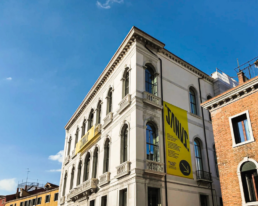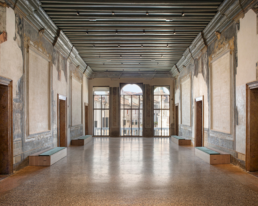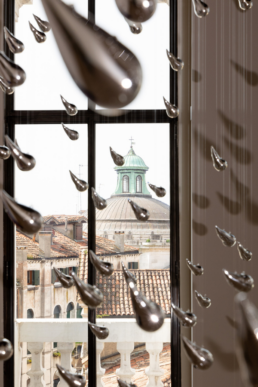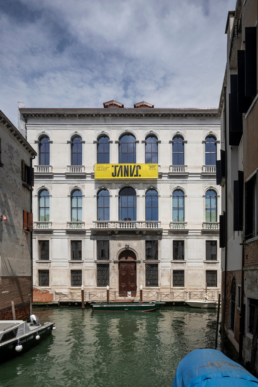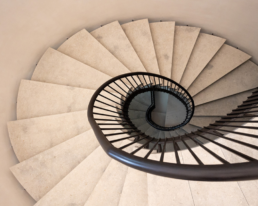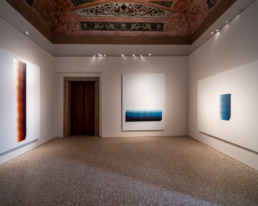Visit to Palazzo Diedo Berggruen
DATE
11.11.2025
For the first time during their trip to Venice, the students of the MArch Advanced program had the opportunity to visit the Palazzo Diedo Berggruen, an 18th-century palace located in the Cannaregio district of Venice.
Built between 1710 and 1720 from a design by Andrea Tirali for the Diedo family, the palace rises over five floors, with two “piani nobili,” mezzanines, and an attic, occupying approximately 4,000 m². Since its acquisition in 2022 by the Berggruen Arts & Culture Foundation, it has been transformed into a cultural space that connects past and present, tradition and contemporaneity.
The restoration of the palace has been particularly rigorous and respectful of its history. Under the direction of architect Silvio Fassi, works were carried out to reveal the 18th-century frescoes and stuccoes, restore the monumental structure of the central “portego,” and recover the sequence of noble rooms with their original Istrian stone, marble elements, and baroque decoration. The interventions combine conservation with adaptation for its new exhibition use: the building now offers not only galleries but also spaces for artist residencies, workshops, and encounters between Venetian artisans and contemporary creators.
During the visit, students also had the chance to explore the exhibition “The Next Earth: Computation, Crisis, Cosmology,” presented in the palace as a collateral event of the 19th International Architecture Exhibition of the Venice Biennale. The exhibition brings together two cutting-edge research projects: Antikythera (with its “The Noocene: Computation and Cosmology from Antikythera to AI”) and MIT Architecture (with “Climate Work: Un/Worlding the Planet”), the architecture branch of the prestigious Massachusetts Institute of Technology. Through installations, models, research documents, and visualizations, the exhibition raises questions about how architecture, design, and computation are being called upon to redefine our role on the planet and the scale of our actions.
For the MArch Advanced students, who also visited Palazzo Cavalli Franchetti — an example of a completely different and more classical intervention — this visit represented more than just an architectural tour. It was an experience that interwove heritage, contemporaneity, and critical design thinking. From the historical palace and its restoration to the exhibition that challenges the boundaries of design, technology, and ecology, students were able to observe how a meaningful physical environment can become a platform for reflection and creation. Encounters of this kind enrich their professional perspective by revealing how an architectural project can engage in dialogue with time, materials, memory, and the challenges of the future.



